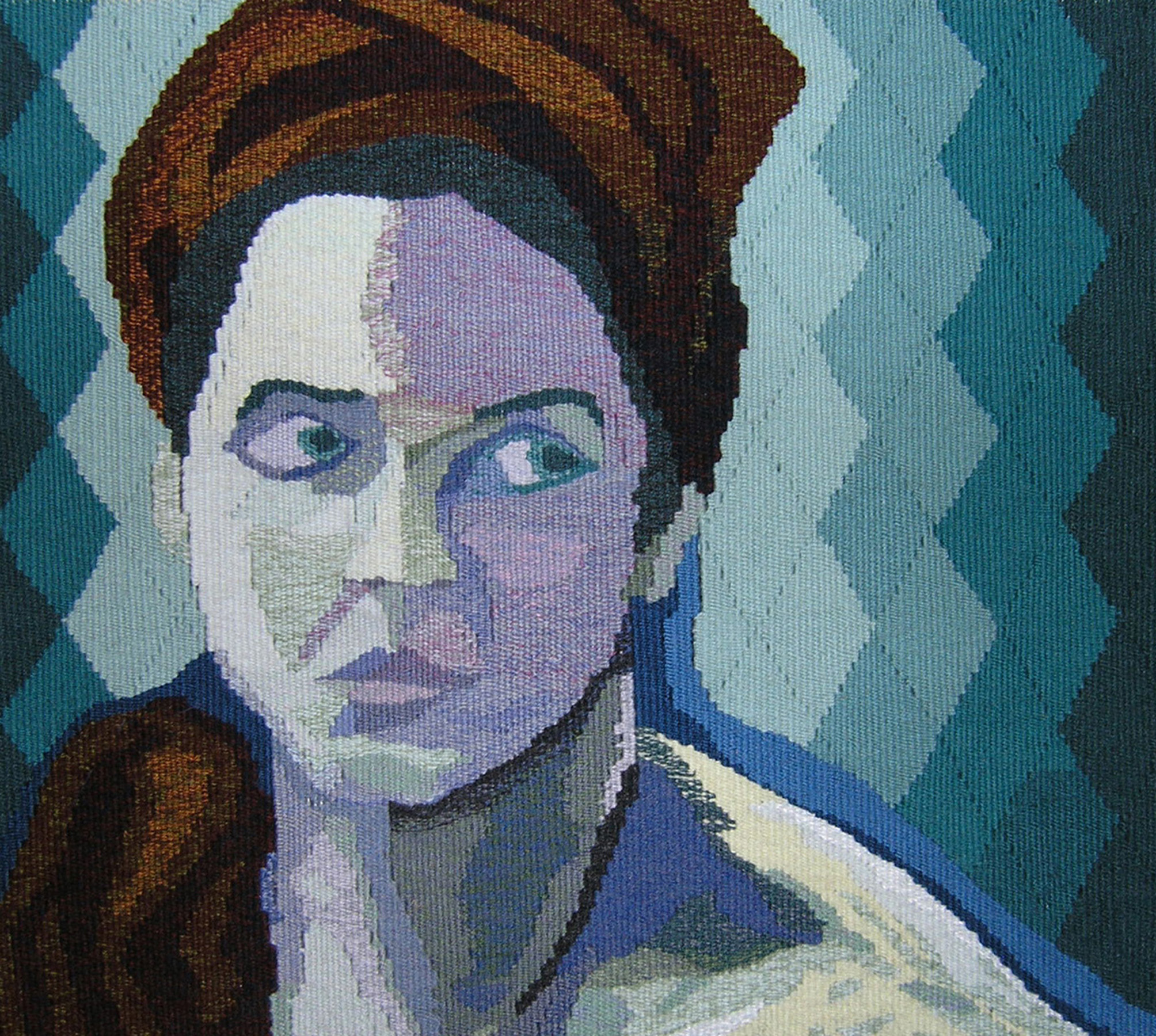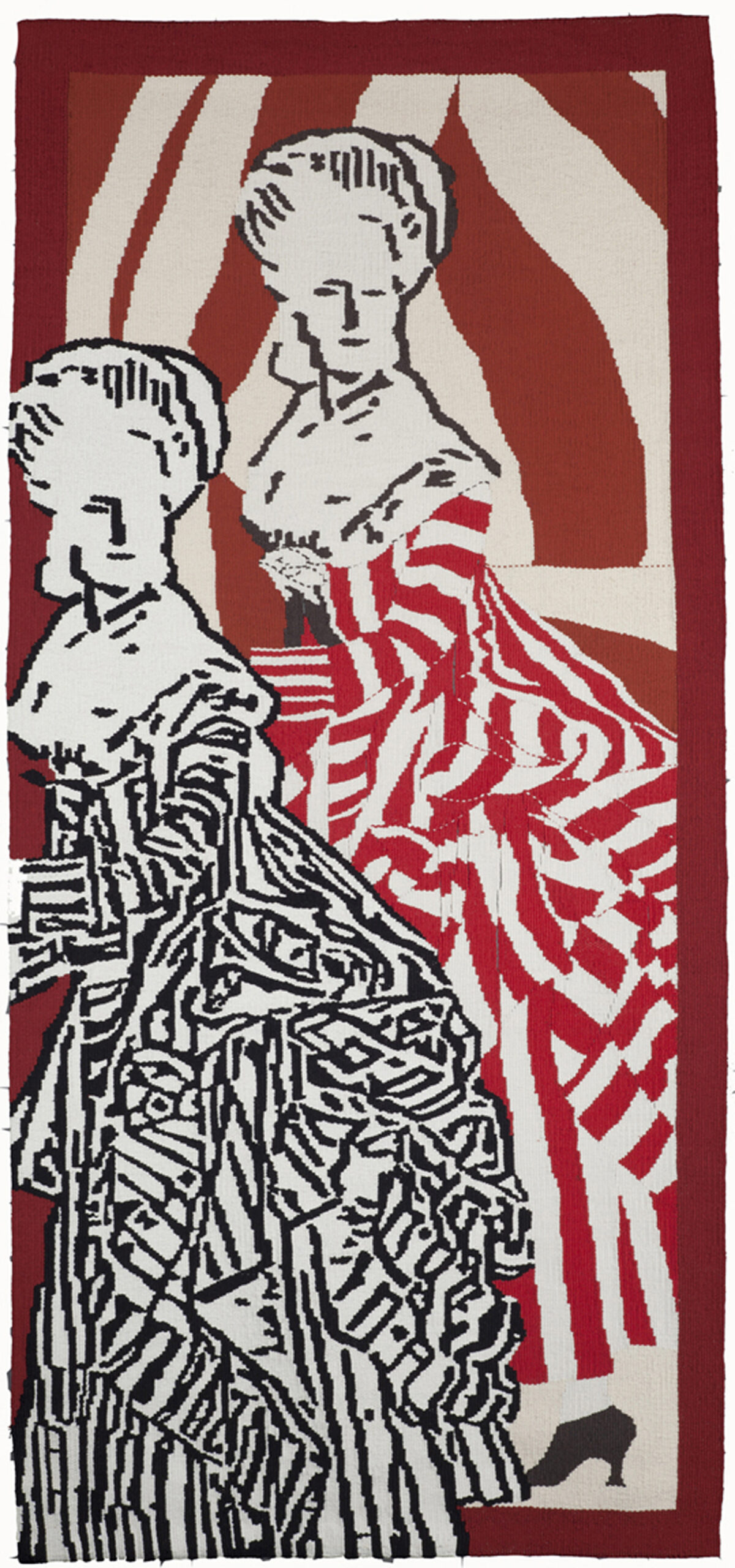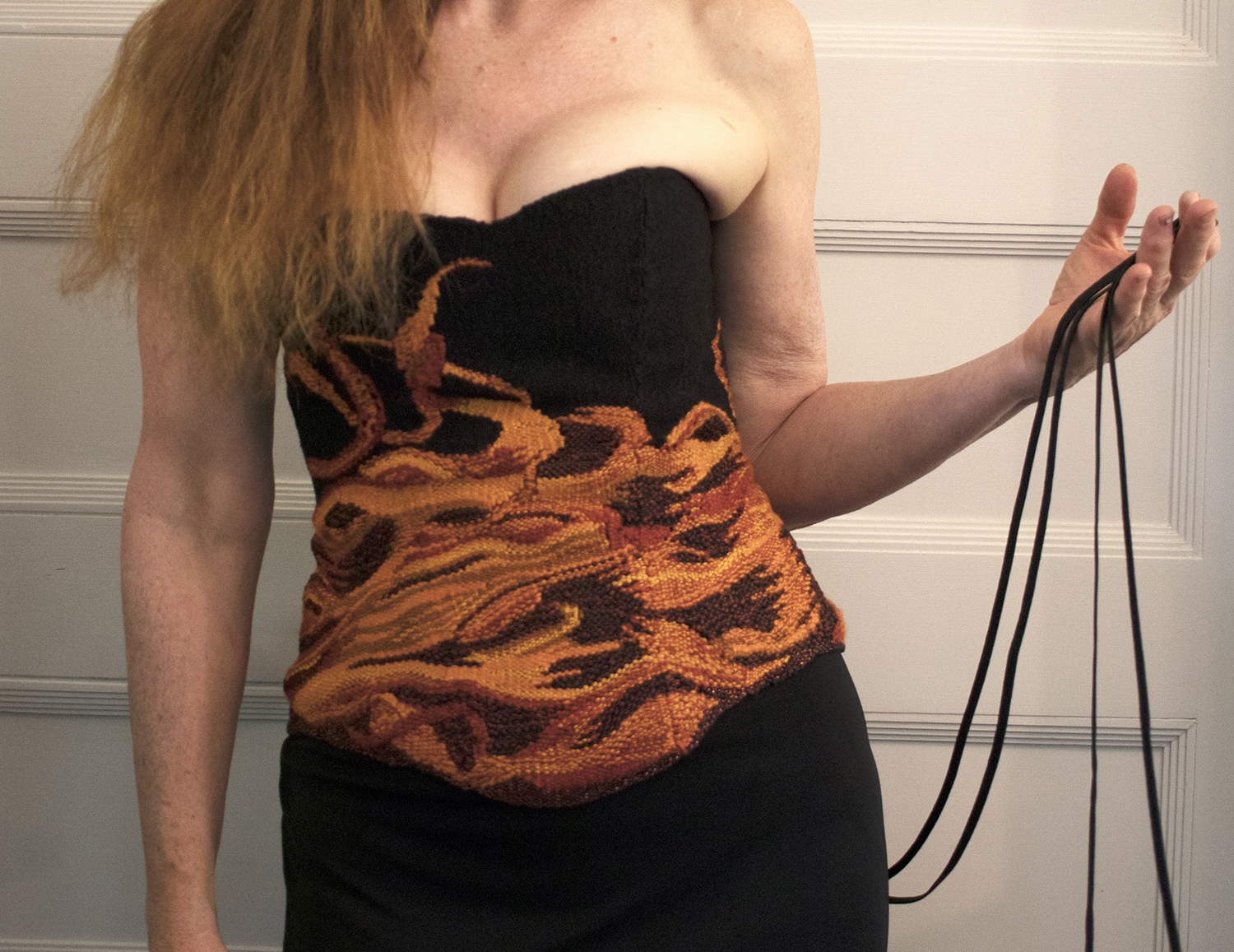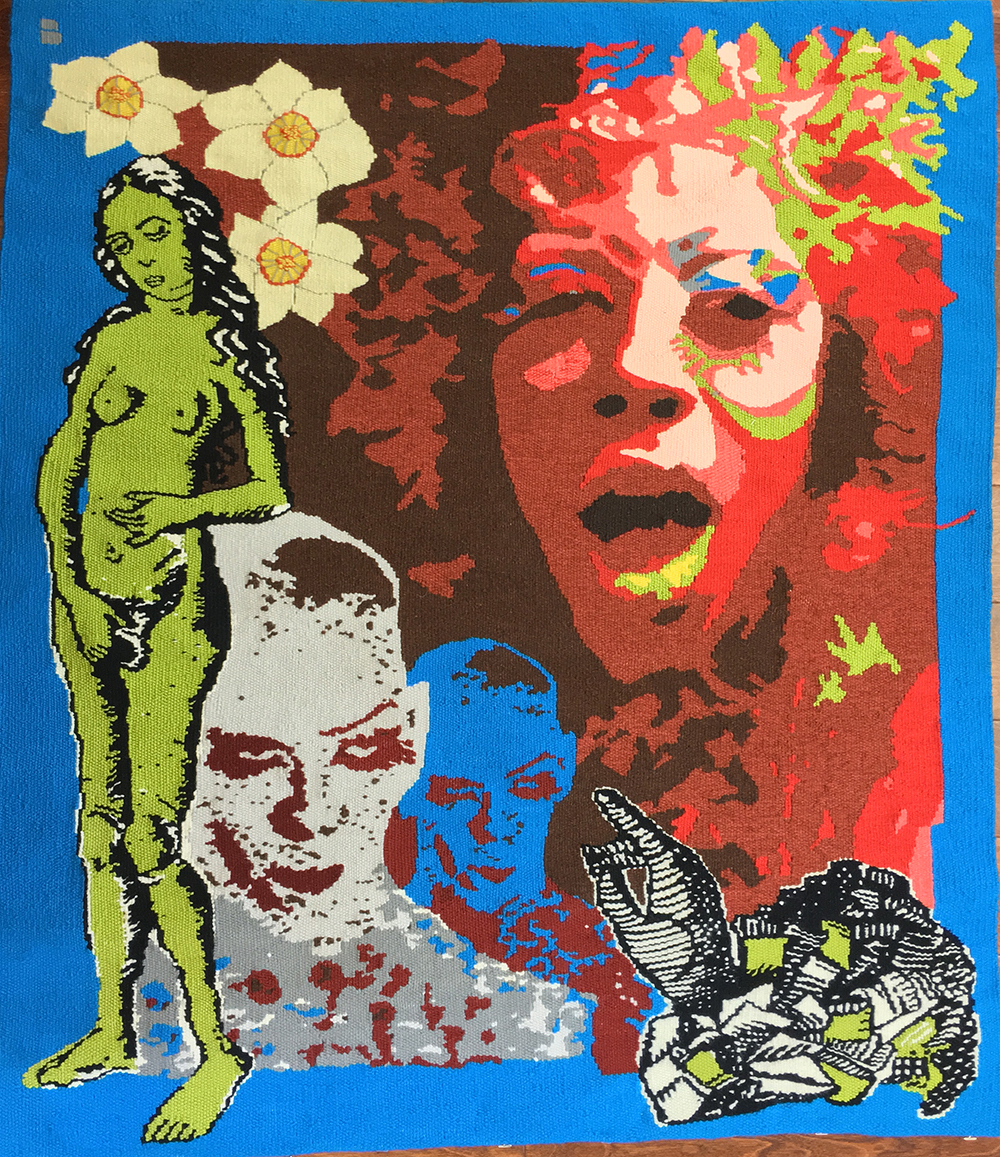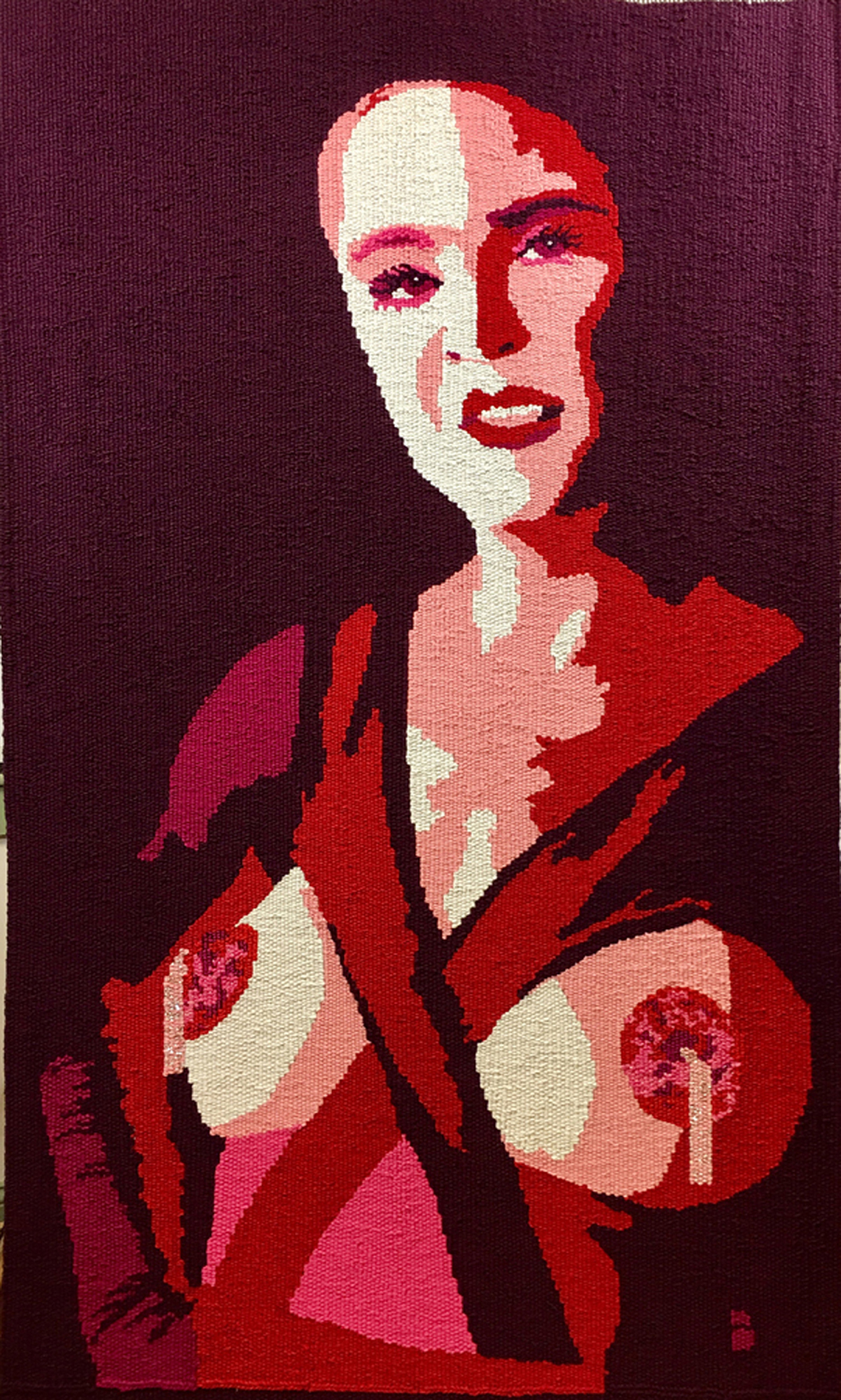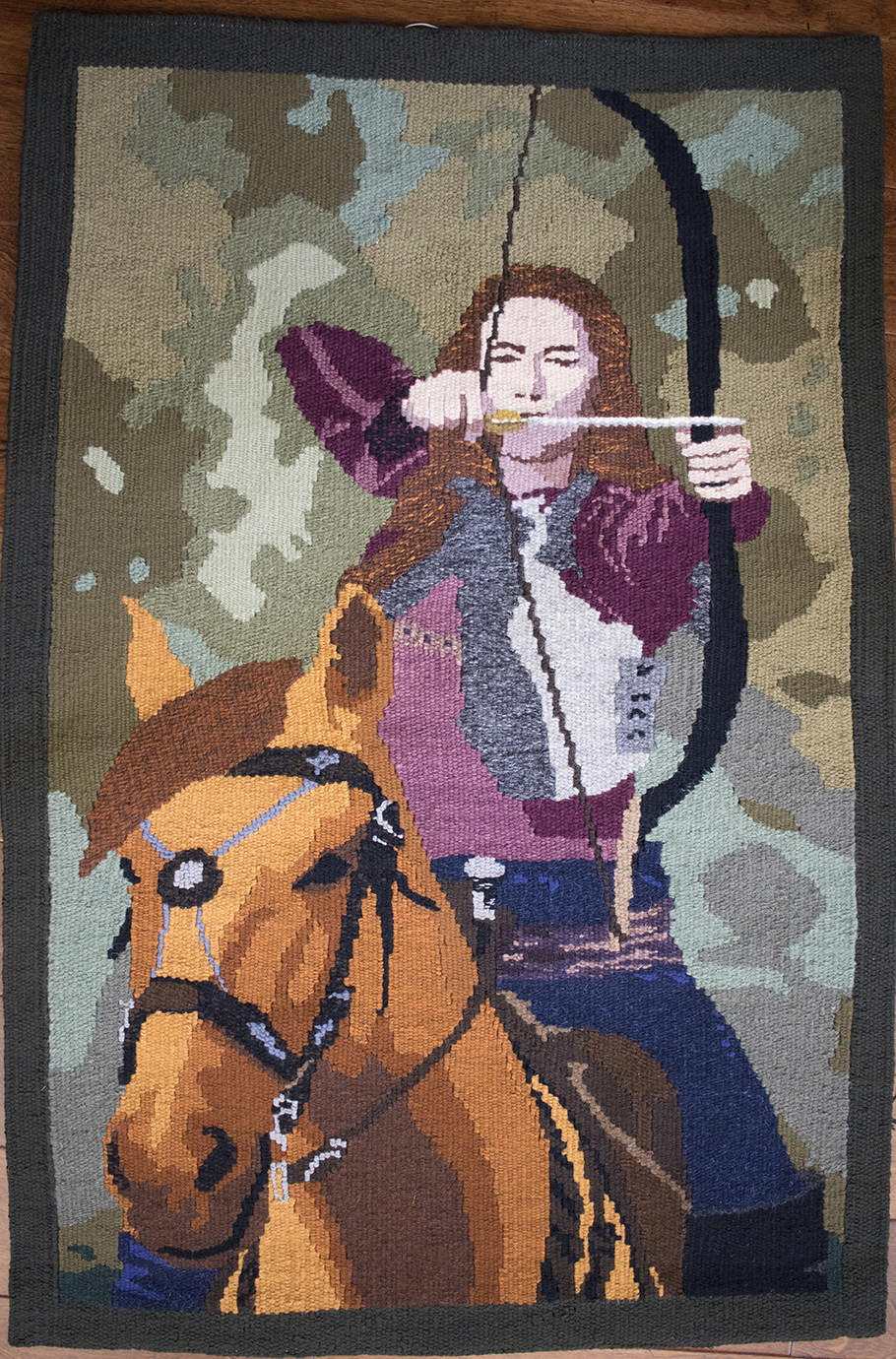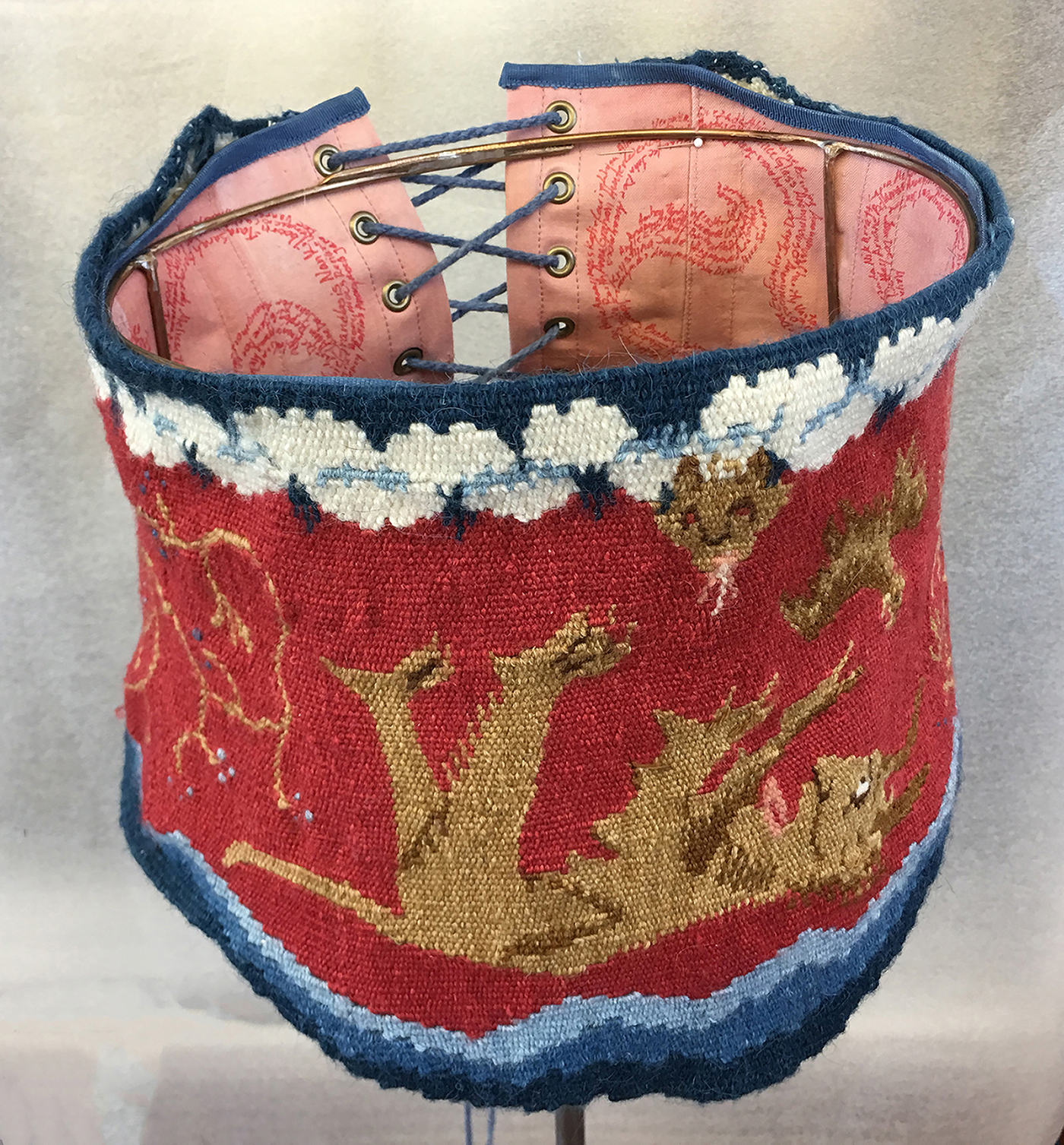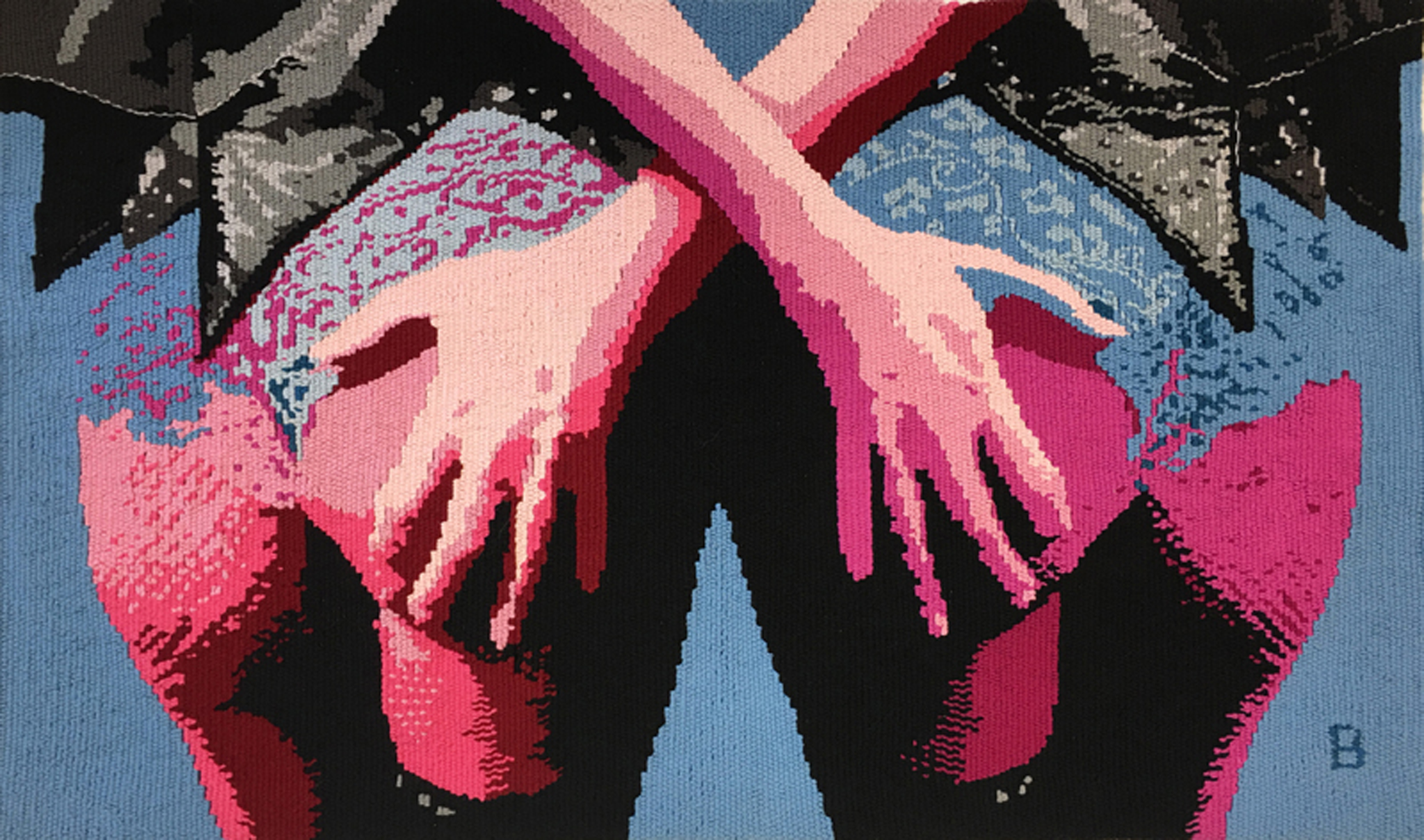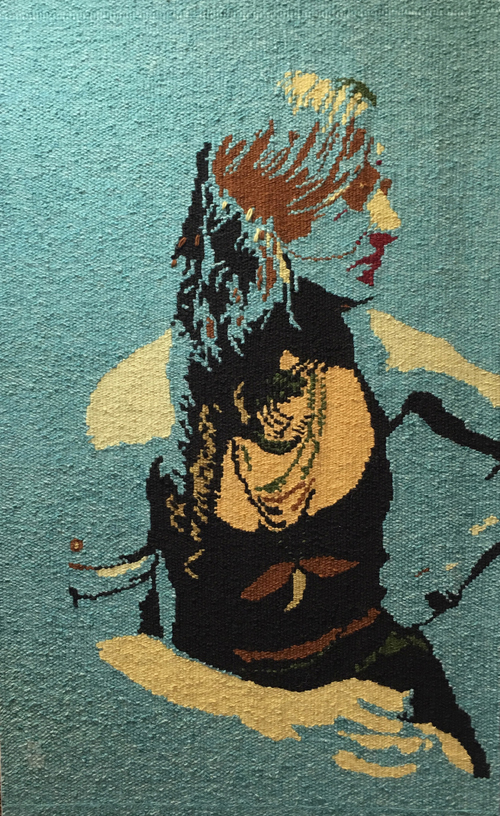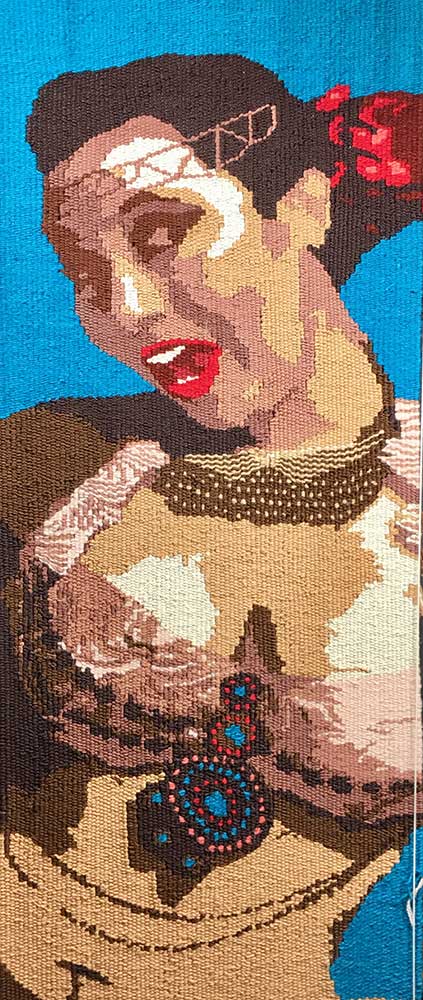Barbara Burns
Woman With Red Turban, 2007
Wool Weft, seine twine warp 20 x 23 inches
Woman With Red Turban is an early tapestry inspired by a painting. I found the eyes looking off the side intriguing.This has remained one of my favorite tapestries from my early work. This work was a First place finalist in the Niche Awards.
Barbara Burns
Revolution, 2012
cotton and silk 60 x 27.5 inches
Revolution" was inspired by a c.1780, French, silk, walking dress, a new style derived from work clothes and town wear of ordinary people. In this new style, the skirt, draped back gave the wearer more freedom of movement. The folds and bright red color caught my eye."Revolution' speaks to the new freedom of the dress but also to the upcoming French Revolution and most importantly to the clothing evolution that would begin in ernest around 1850 with talk of how restrictive clothing distorted women's bodies and compromised their health. This was the start of the women's movement. Women tried to take back control of their bodies through clothing, later suffrage and on to today's issues. It won Best Traditional Tapestry from Atilje 61' 5th Triennial of Tapestry, in Novi Sad, Serbia
Barbara Burns
Samson’s Revenge, 2020
wool weft seine twine warp, grommets, corset satin. 14 x 10 x 7 inches
The imagery of hanks of roughly cut hanks of hair is a reminder of the story of Samson and Delilah. It is part of a collection of corsets which express my fascination with the ways people have distorted their bodies in the name of beauty and art: historically, the corset and foot binding are well known. Being displayed on an armature, propels the corset into the world of sculpture, taking its shape through pulled warp weaving techniques and shaping to become three dimensional. The corset has been designed to fit the artist. It is supported by a substructure which includes corset satin, stays, grommets and lacing all typical of corsets. When transferred from a wall hanging to the format of a corset, the imagery takes on new meaning as it wraps tightly around the body. My intention is to give the viewer something to consider beyond the technical and visual aspects of the work.
Barbara Burns
Temptation, 2016
Handwoven Tapestry: wool and cotton weft, seine twine warp 45 x 40 inches
In “Temptation” I was exploring the controversies around the subject of sexual identity, individuality, loss of innocence, enlightenment and liberation. The common destiny of humankind is by definition inclusive. I am concerned that people on the “fringe” may be left out and this should not be the case. I see Temptation as a signal flag to inclusivity. This tapestry is full of symbolism, a hallmark of early European tapestry, which the illiterate of that time were able to understand. My work tells stories as well. Every element I use, including images, fiber and color choices depict a message for the viewer. I find the dichotomy of using the ancient medium of tapestry to express contemporary subjects is a powerful and satisfying tool.
Barbara Burns
Amandaconda, 2017
Handwoven Tapestry: cotton weft, seine twine warp 50 x 31 inches
Amandaconda is part of my Burlesque series which explores the sensual, female form from my perspective as a performing burlesque and belly dancer. It also exemplifies the parallels between exposing myself as a dancer vs as an artist. Combining my passion for dance with my love of tapestry I am creating a series intended to challenge the observer with complex, and often contradictory, societal views of women. Some of these portraits are larger than life to heighten the emotion and drama, as in Amandaconda.
Barbara Burns
Fréo Ellenlic: Brave and Valiant Woman, 2019
Handwoven Tapestry: wool and cotton weft, seine twine warp 43 x 28.5 inches
Women have been “put in their place” since time immemorial. Every culture has their heroine who has broken this mold to take a stand and inhabit the space between oppression and freedom, pushing the boundaries of social and political expectations. Boudica, Beatrice of Portugal, Joan of Arc, Rosa Parks and Gloria Steinem, they all have this in common. My work is driven by my fascination with the human face and form. Often, I use my work to make a social or political statement. In the climate of Trump America, strong women have become the enemy, truth is a moving target and commitment is negotiable. In this world of information overload, a symbol can break through the clutter in a way that words cannot. Symbols are powerful, inspirational and often instantly recognizable. In Homage to Valiant Women you see a woman mounted on her horse, her bow string drawn, arrow nocked, ready to be let loose. She is timeless in an unidentified space. Seated on her horse, she moves through the temporal dimension. Her arrow points to the future. She is focused, resolute and allied with her mount. She is not any woman: she is all women. She is not just sitting on a horse, she is mounted upon her bridled power. She is focused and heroic. When the arrow strikes the target the score is irrefutable and true.
Barbara Burns
Little Devil Corset, 2018
Handwoven Tapestry: hand dyed wool weft, seine twine warp, cotton coutil, plastic cable ties as boning, metal grommets, cotton lacing permanent marker 9.25 x 9.75 x 8
This is the first of several tapestry corsets which, through unwoven darts and pulled warp techniques and/or shaping become three dimensional. This collection of corsets express my fascination with the ways people have distorted their bodies in the name of beauty and art: historically, the corset and foot binding are well known. Being displayed on an armature, propels the corset into the world of sculpture. The corset has been designed to fit the artist. It is supported by a substructure which includes cotton coutil, stays, grommets and lacing, typical of corsets. This first piece in the series has imagery (little devils, water, clouds and vines), inspired by the Apocalypse tapestry in Angers, France. When transferred from a wall hanging to the format of a corset, the imagery takes on new meaning. The little devils are reaching for the corset laces behind the wearers back. What are they about to do? Are they going to tighten the laces, loosen them? What or who do these devils represent, the uncontrolled, alpha male narcissist who prefers women as an accessory to his power to be controlled and objectified? On the inside of the corset are written names of people who have been sexually abused, harassed and/or raped. The names are written in the pattern of a vine as in the original Apocalypse tapestry and in the Little Devil Corset tapestry here. My intention is to give the viewer something to consider beyond the technical and visual aspects of the work.
Barbara Burns
Pas de Deux, 2016
Handwoven Tapestry: Mercerized cotton weft, seine twine warp 23.5 x 39.5
Pas de Deux is part of my Burlesque series which is based upon my own experience as a dancer and as a woman expressing herself. Begun with a backstage photo at a burlesque performance, Pas de Deux symbolizes the duality of a dancer’s persona and the woman within. This work also expresses the fellowship and respect that develops between dancers. The lace work patterning is a reminder of antique lacework. What was once costly and rare, handmade by women at a meager wage, has become ubiquitous, so commonplace, it even adorns the derrière. Pas de Deux won Bets of Show at Heallreaf 2 in London, England.
Barbara Burns
Ingrid: Dancer In Repose, 2016
Wool Weft, seine twine warp 40 x 26
Ingrid coming out of the background is a metaphor for the emerging woman as she matures and grows into herself.
Barbara Burns
Madeline, 2018
Handwoven Tapestry: wool weft, seine twine warp 34 x 15.25 inches
Madeleine exemplifies the joy and energy of a dancer.
